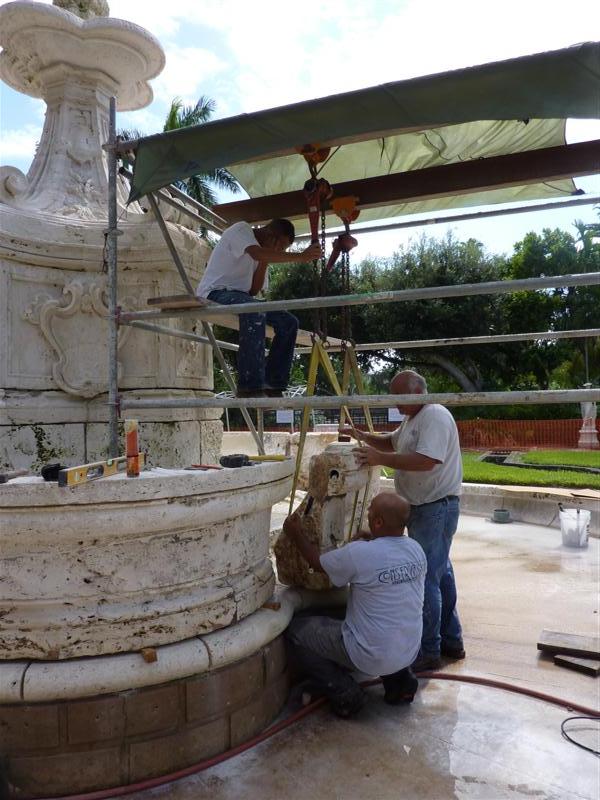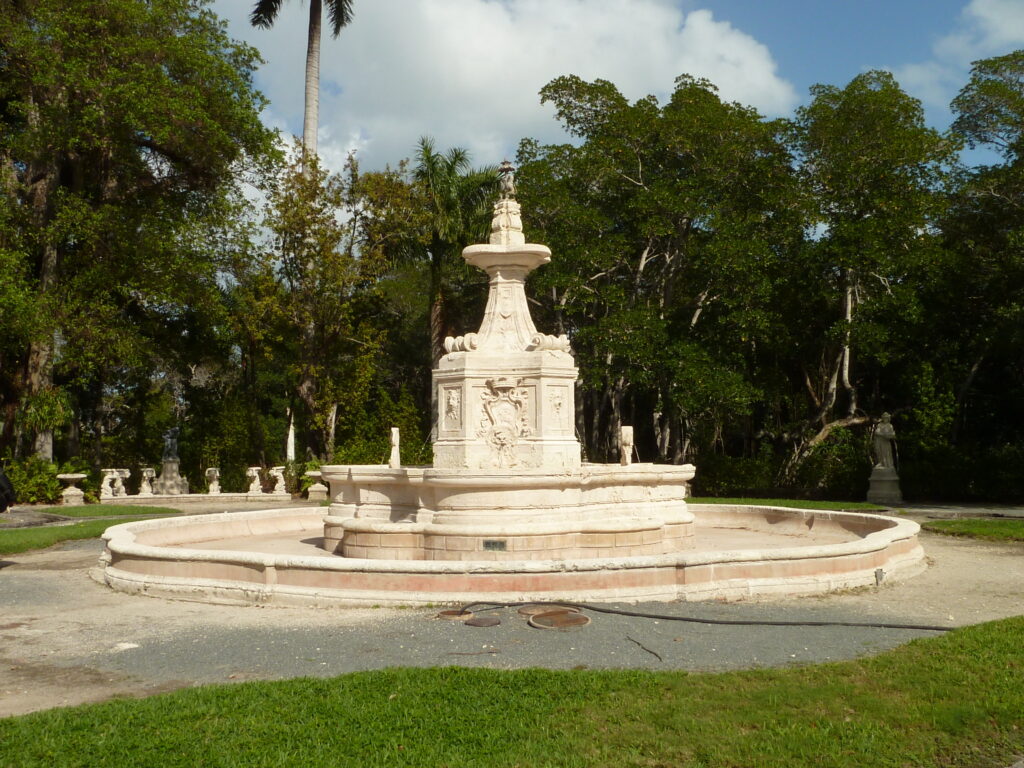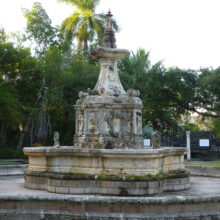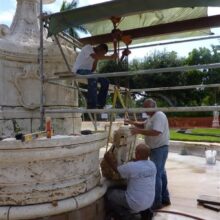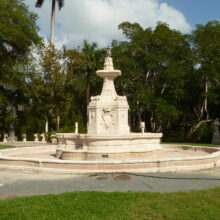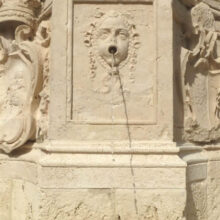Sutri Fountain
The Sutri Fountain was constructed in 1722 on the outskirts of Rome and is made of native Tivoli travertine from a design attributed to the Late Baroque architect Filippo Barigioni. The fountain was disassembled in 1908 in favor of a smaller fountain, whereby it was purchased by James Deering and transported to the U. S. To become a centerpiece of the garden at Vizcaya, his bay-side estate in Miami, Florida. Today the Sutri Fountain is the focal point of the Fountain Garden at Vizcaya Museum and Gardens.
The fountain was plagued by various types of biological soiling and mineral staining due to lack of water filtration, as well as erosion from years of operation. It had also been subjected to several inappropriate repair campaigns. Cracks in the basin walls and basin floor raised serious structural concerns, threatening the continued operation of the fountain.
We were tasked to carry out an assessment and treatment of the Sutri Fountain during the course of a multi-year restoration project. Cleaning followed by further investigation and testing to develop appropriate protocols for deeply embedded mineral stains were the initial steps. Repairs included stone patching, new travertine dutchmen, crack injection and internal pinning to repair broken components. The final scope required engineering to identify a strategy to repair the primary fountain basin. The project also required: dismantling the basin walls; demolition of the existing basin floor slab; routing of new chaseways for infrastructure; replacement of coral stone moldings and pinning and reinstallation of the basin walls.

